In a letter to Robert Hooke in 1675, Isaac Newton famously stated: “If I have seen further it is by standing on the shoulders of Giants.” And though today we see Newton as one of the “Giants” of science, he himself would say that he merely expanded upon what others had done before him. The same is true in engineering. We build longer, taller, faster than ever before – all because of the advancements of those who came before us.
The recipe for concrete was known to the Romans, who used it extensively in their constructions. It was lost for centuries before being rediscovered in the modern era, and though we have added rebar to strengthen it, what we have been able to accomplish is made possible by what the Romans were able to do thousands of years ago.
Steel was being developed in the east hundreds of years before Christ. Though they may not have known how exactly the metal became stronger by adding carbon to the iron, they were able to do it. Modern methods have given us stronger steels, even corrosion resistant alloys, but what we have done is based on what others had already figured out thousands of years ago.
It is always a good idea to look back and reflect on the giants in our own professions, if for no other reason than to see how far we have come. In this edition of TheBridgeGuy, we look back at three icons of bridge engineering.
Joseph Strauss (1870 – 1938)
Joseph Strauss will forever be linked to one of the most famous suspension bridges in the world – the Golden Gate Bridge. But if you look closer, he accomplished so much more during his life. And some of those accomplishments were even more impressive than Golden Gate.

Born into an artistic family in Cincinnati, Ohio, Strauss received a degree in civil engineering in 1892 from the University of Cincinnati. The artistic side of his family appears to have made a mark upon him. He had a passion for poetry and wrote in his spare time. He wrote “The Mighty Task is Done,” his most recognizable poem, after Golden Gate was opened.
Strauss became interested in bridges during a hospital stay whilst in college. His hospital bed overlooked the John A. Roebling Suspension Bridge and from then on he knew what he wanted to do with his life. He worked for Ralph Modjeski for a time, a firm specializing in building bridges. He observed the state of bascule bridge design at the time and did what any good engineer should do – he tried to make it better.
Bascule bridges work like a see-saw, they require counterweights for balance. In the latter 19th century, bascule bridges were utilizing costly iron ingots for counterweight. Strauss’ design used less costly concrete, but his ideas were rejected by his superiors. Strauss then left Modjeski to start his own bridge building firm.
In Chicago, Strauss opened the Strauss Bascule & Concrete Bridge Company in 1902. It was here that he revolutionized the bascule concept.
In order to reduce counterweight (and therefore minimize the amount of iron required), many designers would lengthen the counterweight arm, but this necessitated a deeper counterweight pit requiring more excavation. Others designers went with larger counterweights and shorter counterweight arms in order to minimize excavation. Strauss observed that neither option was cost effective.
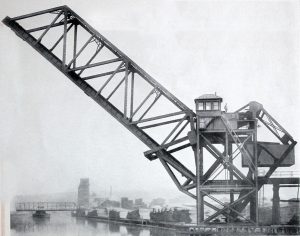
Strauss’ solution was a design that used concrete blocks for counterweight while eliminating the pit altogether. To do this, he placed the counterweight overhead rather than having it be concealed beneath the roadway in a pit. As the bridge opened, the counterweight would swing down toward the roadway during an opening. It was pure engineering innovation. The contractors who built his first bridge stated that the design proved its economy by using less material than any other bascule concept.
The success of his bascule design wasn’t just in its economy. The bascule was popular among bridge owners because it was an alternative to swing bridges. Swing bridges relied on pivot piers in the middle of the channel, whereas bascules did not, a fact that many bridge owners were eager to capitalize on.
In addition to his new bascule design, he patented other concrete bridge types. He advertised these in engineering journals. Though based in Chicago, his designs appear all along the west coast – Aberdeen, WA, Portland, OR and of course, San Francisco, CA.

In the early 20th century, Strauss was among the leading designers and builders of bascule bridges in the United States. Copies of his designs show up as far away as Sweden and France. In all he held 15 patents for bridges in his lifetime, two alone for the Golden Gate Bridge. While his version of the overhead counterweight bascule bridge may be seen as unsightly today, Strauss is nonetheless a giant of bridge engineering and of entrepreneurship among bridge engineers.
John A. Roebling (1806-1869)
John Roebling is widely considered to be the father of the modern suspension bridge. Born in Prussia, his mother recognized his intelligence and arranged to have him tutored in mathematics and science from an early age. He passed his surveyors examination in 1824, then went on to the Bauakedamie in Berlin, a school for training master builders. There he studied all sorts of engineering related subjects and languages. He also developed an intense interest in philosophy, even working on a treatise of over 1,000 pages throughout his life on his thoughts about the universe.
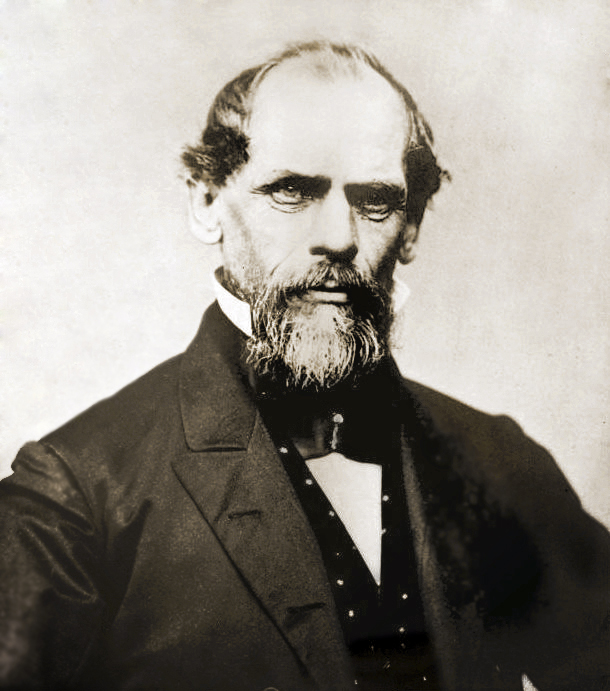
Interestingly, Roebling never completed his engineering education. Though he studied and prepared for his examinations, he never took them. He worked for several years on military road projects, often doodling out designs for suspension bridges in his spare time.
Roebling left Prussia bound for the United States in 1831. War had stifled infrastructure progress in Europe and the US was seen as a technological utopia. He took up farming rather than engineering when he reached the US. He soon gave up farming and returned to his true calling after the birth of his first child in 1837.
Even as a farmer, Roebling’s mind was never far from suspension bridges. He developed the seven strand wire rope to hold up a footpath on his farm and began producing wire rope in 1841 for use on suspension bridges.
His innovations in suspension bridge technology furthered the bridge type in his lifetime. The spans that could be achieved began to grow and grow, and Roebling became more and more successful. His son Washington would join him on projects after 1859. In 1863, Roebling completed what was the longest bridge in the world at that time. Spanning the Ohio River in Cincinnati, this bridge would eventually be named in his honor.
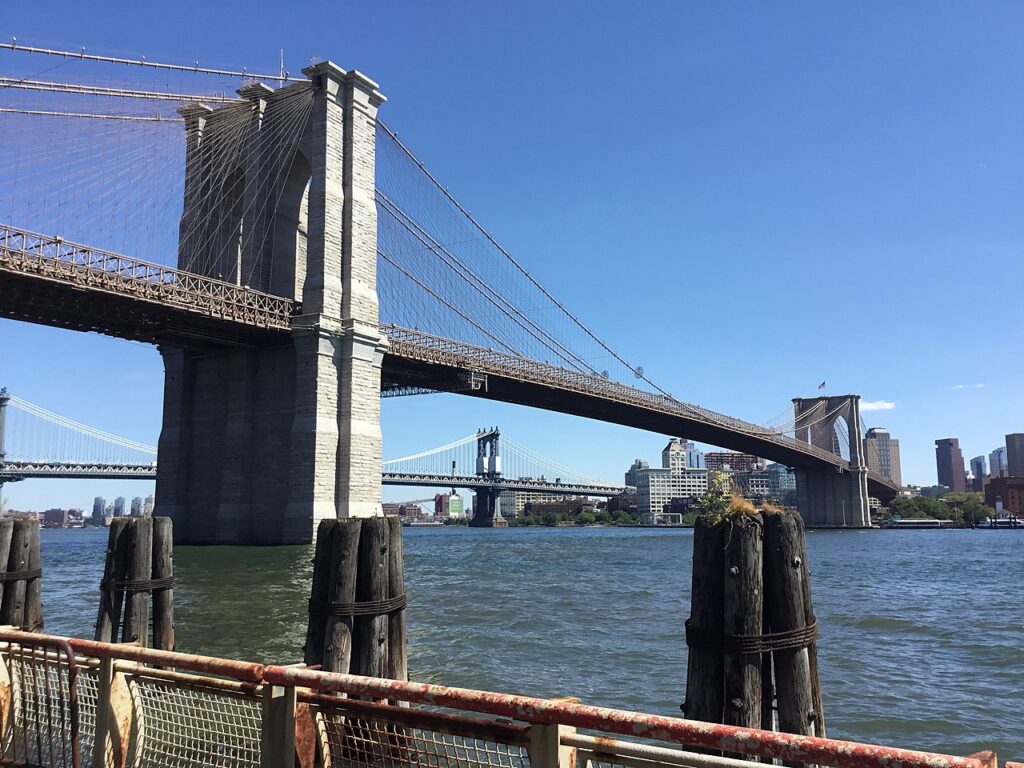
He died directing the construction of the bridge he is most known for, the Brooklyn Bridge. His foot was crushed by an arriving ferry and his injured toes were amputated. He refused further treatment and died in July 1869, leaving his wife and son to complete the project. The Brooklyn Bridge remains a unique icon of bridge engineering and is one of the most photographed bridges in the world. A true giant of bridge engineering – if the technology didn’t exist to do what he wanted, he simply invented it.
Homer M. Hadley (1885 – 1967)
Giants aren’t afraid to propose new, even radical ideas to solve problems. They don’t shy away from untested technologies. They pioneer new ways forward despite what critics say. By this definition, Homer Hadley definitely ranks as a giant among bridge engineers.
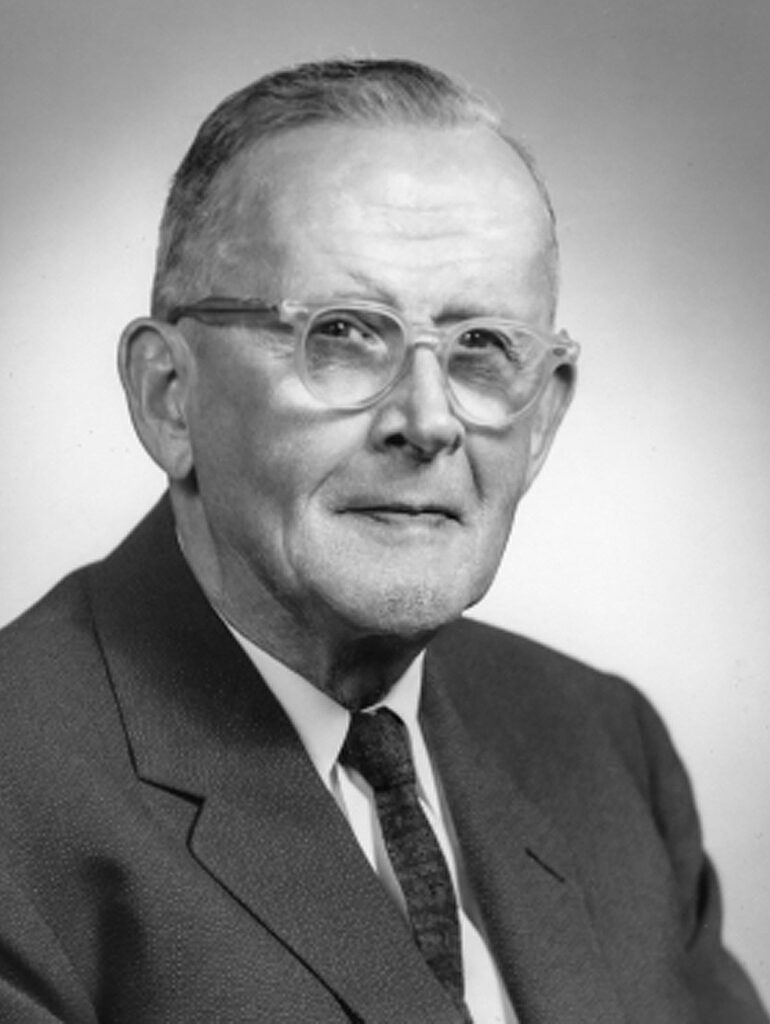
Born in Cincinnati, Ohio but raised in Toledo, Hadley made his way out west as a surveyor. Working in Alaska, North Dakota and even Canada, he eventually settled in Seattle. He studied engineering at the University of Washington, completing three years worth of coursework.
Hadley’s first exposure to concrete was in designing concrete ships and barges in Philadelphia during World War I. Steel shortages forced the government to look to alternate materials to build ships with. It was this experience that inspired his idea for a floating bridge across Lake Washington between Seattle and Mercer Island.
At a meeting of the American Society of Civil Engineers on October 1, 1921, Hadley proposed his floating bridge idea. No one liked it. The Navy had aesthetic concerns, and bankers ridiculed his idea to fund the bridge through private money. The idea was called “Hadley’s Folly.”
Hadley’s pioneering use of new types of bridge technology didn’t just end with the floating bridge idea. European engineers had already utilized concrete box girder bridges by that point, something that would not take off in the United States until the 1940’s and 1950’s. Hadley himself believed he had designed the first box girder in the United States – the Marshall Bridge, located near Eatonville, WA. He would design at least two other hollow style concrete bridges during this period – the Purdy Bridge and Spiketon Creek.
But Hadley wasn’t done yet. He pioneered another novel bridge type – the stayed bridge – designing one of the first of its kind in Washington near Benton City. Along with his son Richard, the pair designed a number of earthquake proof buildings in Alaska that would survive one of the most powerful quakes on record in 1964.
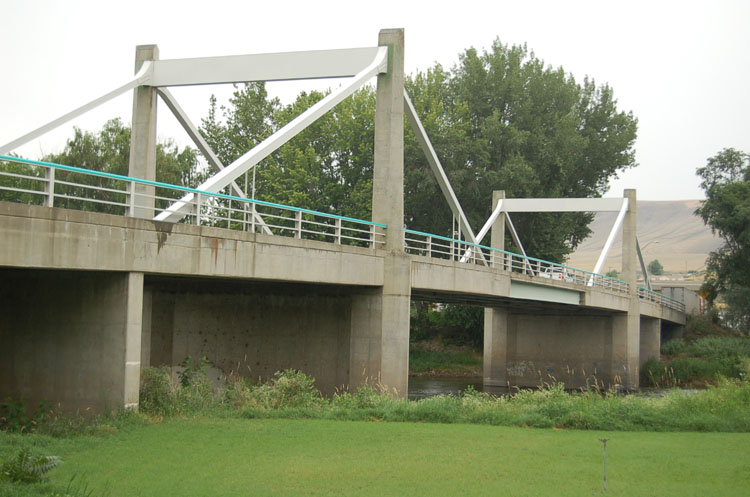
Meanwhile, Hadley pitched his floating bridge concept to Lacey V. Murrow, then director of Washington State Highways, sometime in the early 1930’s. Intrigued by the idea, Murrow had his staff vet the radical idea. After verifying that the design was feasible and with Murrow’s backing, the concept of a floating bridge began to become a reality.
Hadley’s association with the Portland Cement Association looked bad for the department, therefore his contributions to the project were minimized. It would take half a century before his novel idea was formally recognized. What initially formed as an idea based on concrete ships led to four established bridges that endure today, three of which have since been replaced with similar style bridges – a testament to Hadley’s ingenuity.
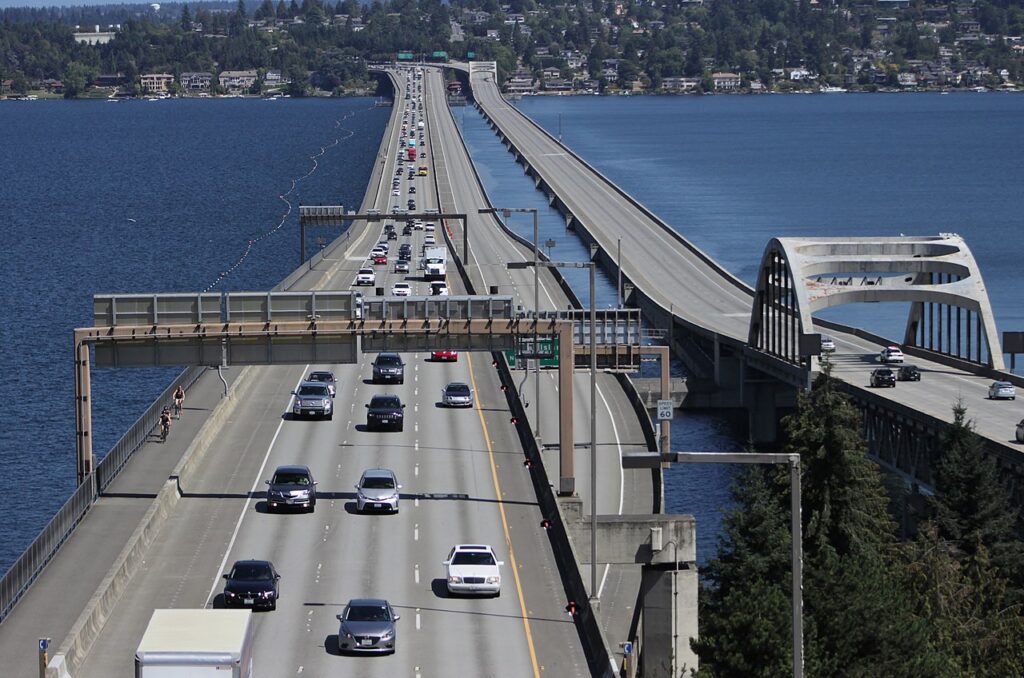
In 1993, Hadley finally received the recognition he deserved for his groundbreaking idea for a floating bridge across Lake Washington. The Third Lake Washington bridge was renamed the Homer M. Hadley Memorial Bridge in his memory, being unanimously approved by the Washington State Legislature. But the honor would come posthumously. Hadley, working up to his death, died unexpectedly at his summer home in Soap Lake, near Ephrata in 1967.
On who’s shoulders have you stood so that you could see further?
Views: 834






